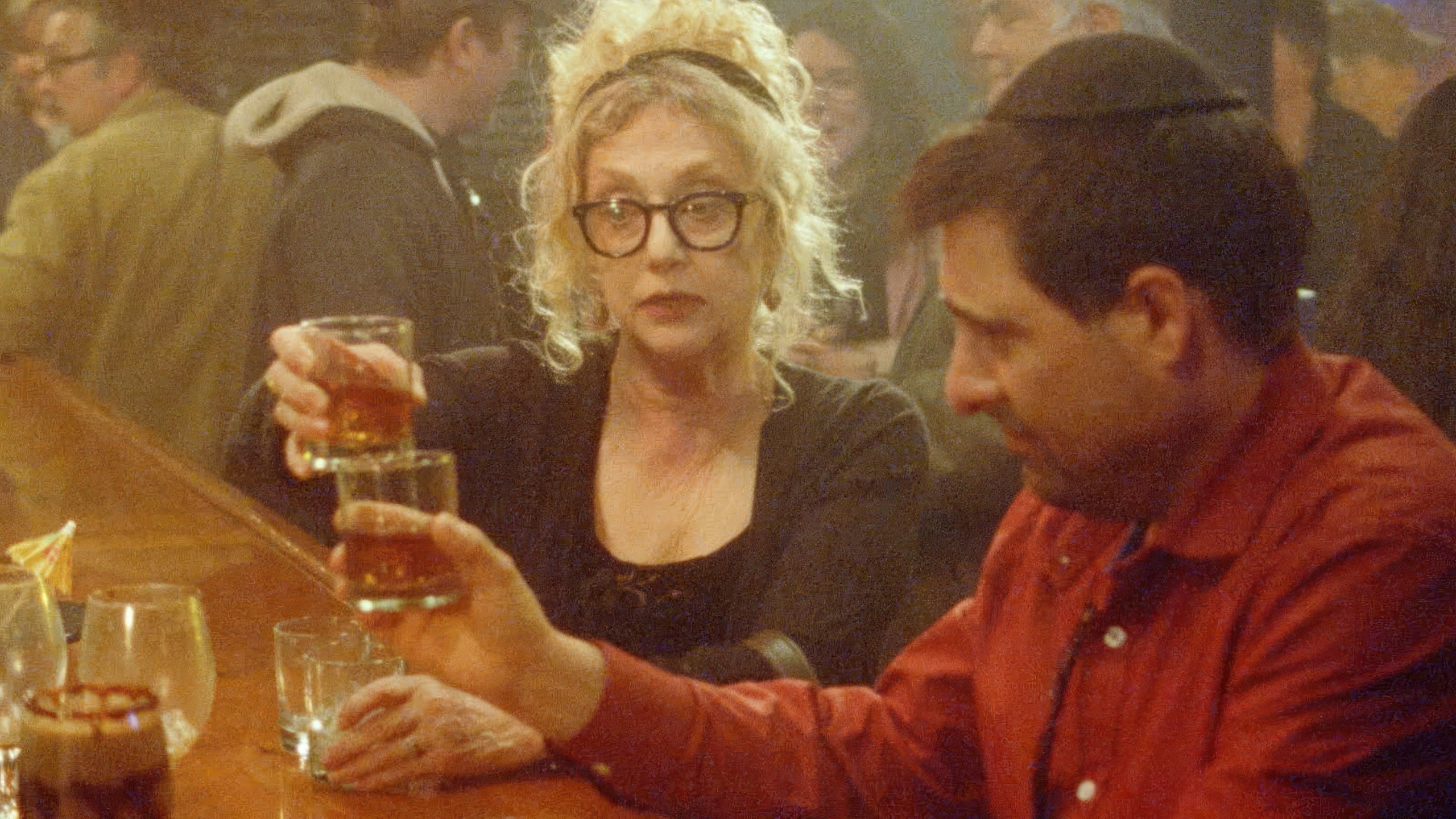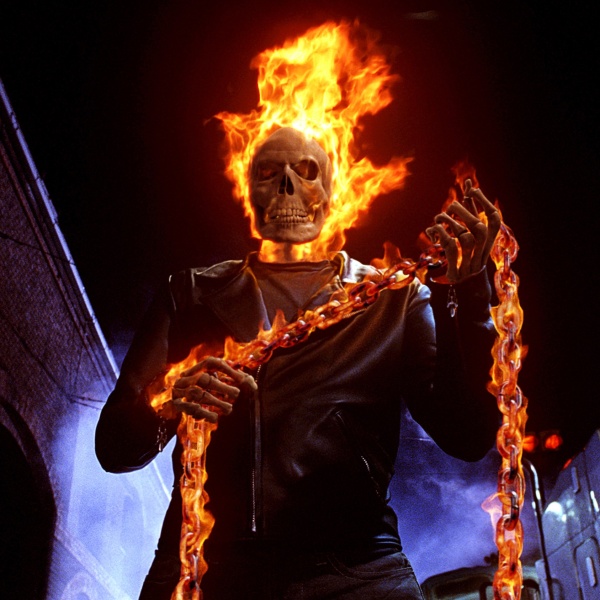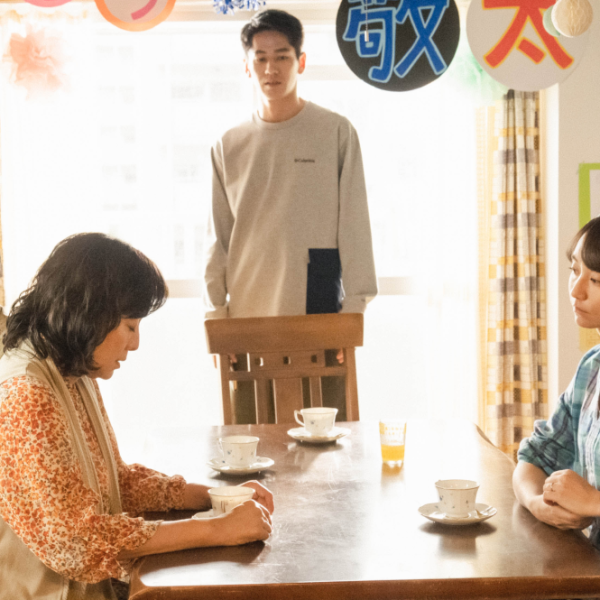“Between the Temples,” the comedy about a grief-stricken cantor (Jason Schwartzman) whose former music teacher (Carol Kane) charges into life demanding a tutor for the Bat Mitzvah she never had, is as deeply unorthodox as it is quintessentially Jewish. The story was also created in an unorthodox way. Co-writer C. Mason Wells calls the blueprint for the story he created with director Nathan Silver a “scriptment” — that is, a creature that lives somewhere between a traditional treatment and a script in the evolutionary chain of film writing.
Silver and Wells’ scriptments are about 50-page prose documents that describe the world of the film; in the case of “Between the Temples,” the document includes both the tentpole plot moments of the movie but also evocative details and even song lyrics that are meant to solicit responses from the actors and department heads, so that the whole filmmaking team can, together, build a better story.
Working in this way not only allows for detailed feedback from collaborators but also excites actors who are used to receiving information in a way that’s often prescriptive at best and stale and formulaic at worst. With scriptments, they get to be writers, too.
IndieWire reached out to Wells to talk about his and Silver’s approach to scriptwriting and the benefits of borrowing from different formats.
This interview has been edited for length and clarity.
IndieWire: How did you land on the approach to create “scriptments?” I’d love to hear how you’ve refined your writing process since the first time you tried it.
C. Mason Wells: I’ve always liked the idea of writing scenes for actors that will never be in the movie. It allows you to give details about the backstory of a character or little moments that won’t ever actually be filmed, but are things that create an impression and an idea.
So, our “scriptments” is a process that has come about organically from trial and error, I think. We want to write something that isn’t too far away from what actors or department heads are used to, but that also excites them and gives them something new.
The scriptment is still written in Final Draft, but it’s not columns of dialogue. So it maybe looks more intimidating at first because visually, it’s more words on the page, but it also delivers many things that are there to inspire the readers. I think a lot of things that might come about from conversations with a production designer or an actor or the costumer of the movie are embedded into this document. The idea is to be evocative in a certain way, to say, “We want to give you additional ideas.”
What are some of those additional ideas in “Between the Temples?”
An example in “Between the Temples,” which is about Cantor Ben, played by Jason Schwartzman, who can’t sing after the death of his wife. So there was a little moment — that I knew we would never film and would never be in the movie — it’s just him walking down the street, and he sees a bird singing. The detail in the script was that he looks at the bird and he’s jealous of it. There’s no way we were going to be able to film that, but it was something for Jason to have an idea of, “Wow, even a bird being able to sing and not him would make him frustrated.”
Little things that are just funny or amusing that are not going to end up in the movie proper but exist within the life of the character, they allow an actor to make something that’s a little more rounded. There’s this old Mike Leigh quote about creating characters that go around corners, and I think this process allows there to be more corners to go around.
You’re giving someone an illustration of the characters’ vibes without handing them a 100-page document of everything that’s ever happened in their life.
We had a lot of conversations with Jason about his character and backstory and also changed elements of his history as the process went along. I think the way that [director Nathan Silver] likes to work is very adaptive to circumstances and the environment. He doesn’t storyboard movies at all. Sometimes dialogue can feel very dead. Sometimes you get to the scene, and actors are saying the lines, and it doesn’t feel right in the room that you’re shooting in, and you need to adapt to that together. A scriptment allows the process of changing those details much more easily than a traditional script, I think. It makes that kind of fluidity more feasible when the story is rendered as prose.
I’m curious if that fluidity on set gives you more flexibility to change big things once you’re into the edit, or are the bones of the movie still tightly controlled?
I will say, on a scene-by-scene level, the scriptment of “Between the Temples” is almost identical to the final film. It’s very, very similar. So figuring out the arc of the story and the characters is really important, where they’re going. But how they get there is always up for debate. We always knew the movie was going to end with Ben giving Carla her Bat Mitzvah at home. That was the final stage. But there dozens and dozens of permutations of how we got there.
It’s within the film’s individual scenes where we will do multiple versions of a scene. With the Shabbat scene, we wrote different versions of it and the final sequence that’s there is edited together from those different versions. That keeps the actors really on their toes because they’re doing different things in different takes. It allows for the volatility that I think that scene has but also the genuine confusion of it, you know?
I think Hong Sang-soo does this, like, he wants his actors playing characters who are supposed to be drunk in a scene to be drunk for the scene. We’re not doing that, necessarily. But a way that you create confusion on screen between people is you actually put the actors in a place of confusion.
Like, there are entire scenes in the movie that are really scripted, and what the actors say is word for word what we wrote. The scene where Ben repeats Carla’s monologue about why she wants to get the Bat Mitzvah was very tightly scripted and delivered exactly how it was on the page because that’s a sequence where every one of those words matters. It’s at those kind of crux points throughout the movie where we know we need to have this or that. But there are other points where it can be looser and maybe have a little bit more texture.






